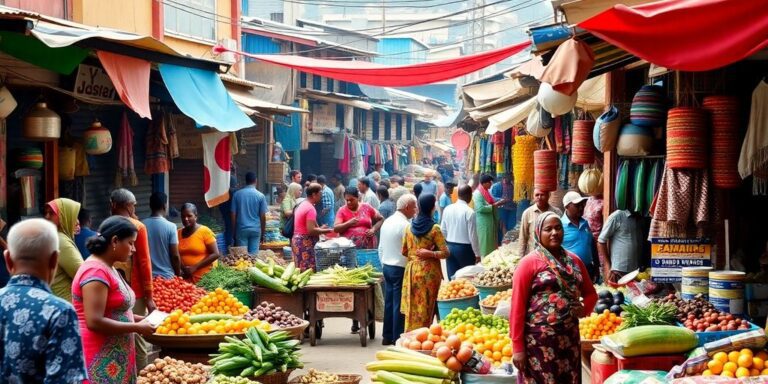Table of Contents
The financial landscape for developing economies has become increasingly precarious, with rising debt burdens and diminishing access to capital. Recent reports highlight the urgent need for improved fiscal policies and innovative financing solutions to address the challenges faced by these nations in their pursuit of sustainable development.
Key Takeaways
- Developing economies are facing a significant financing gap, estimated at USD 99 billion annually.
- Multilateral institutions are stepping in as lenders of last resort, compensating for the retreat of private creditors.
- The IMF’s recent policy changes may place additional burdens on low-income countries, raising concerns about sustainability.
The Financing Gap
Developing economies are grappling with a substantial financing gap that threatens their development agendas. According to the latest reports, Latin America and the Caribbean (LAC) require better fiscal policies to mobilize resources effectively. The region’s sustainable financing gap is estimated at USD 99 billion annually, necessitating a coordinated effort between public and private sectors to bridge this divide.
The Role of Multilateral Institutions
In the wake of a retreating private sector, multilateral institutions have taken on a critical role in providing financial support. In 2022 and 2023, these institutions injected nearly $85 billion more into developing economies than they collected in debt-service payments. This shift has positioned them as essential players in the financial landscape, with the World Bank’s International Development Association (IDA) accounting for a significant portion of development aid to the poorest countries.
Rising Debt Burdens
The financial strain on developing countries is exacerbated by soaring debt levels. In 2023, these nations spent a record $1.4 trillion on debt servicing, diverting crucial resources away from essential services like health and education. Interest payments on external debt for the poorest countries have quadrupled since 2013, leading to a solvency crisis rather than a liquidity problem.
IMF Policy Changes
The International Monetary Fund (IMF) has recently reviewed its Poverty Reduction and Growth Trust (PRGT), which provides concessional lending to low-income countries. The review introduces a tiered interest rate system that may impose additional financial burdens on these nations. Critics argue that this approach could exacerbate existing challenges, particularly in light of rising global interest rates.
Recommendations for Sustainable Development
To address these financial challenges, several key recommendations have emerged:
- Enhance Tax Collection: Improving tax revenues is crucial, as many LAC countries currently collect only 21.5% of GDP in taxes, compared to the OECD average of 34%.
- Optimize Budget Allocation: Increasing spending efficiency and reallocating resources can free up funds for development initiatives.
- Encourage Private Investment: Developing financial markets and fostering innovation can channel more private resources toward development goals.
- International Cooperation: Strengthening partnerships and mobilizing new resources through public-private collaborations is essential for sustainable development.
Conclusion
The financial challenges facing developing economies are complex and multifaceted. As the landscape continues to evolve, it is imperative for governments, multilateral institutions, and private sectors to collaborate effectively to create a more sustainable and equitable financial environment. Without decisive action, the promise of development may remain unfulfilled, leaving the world’s most vulnerable populations at risk.
Sources
- Comunicado Latin America and the Caribbean Need Better Fiscal Policies to Finance their Development | Economic Commission for Latin America and the Caribbean, Comisión Económica para América Latina y el Caribe.
- For developing economies, the finance landscape has become a wasteland, World Bank Blogs.
- IMF’s PRGT review places the burden of financing the program on low-income countries – Bretton Woods Project, Bretton Woods Project.








